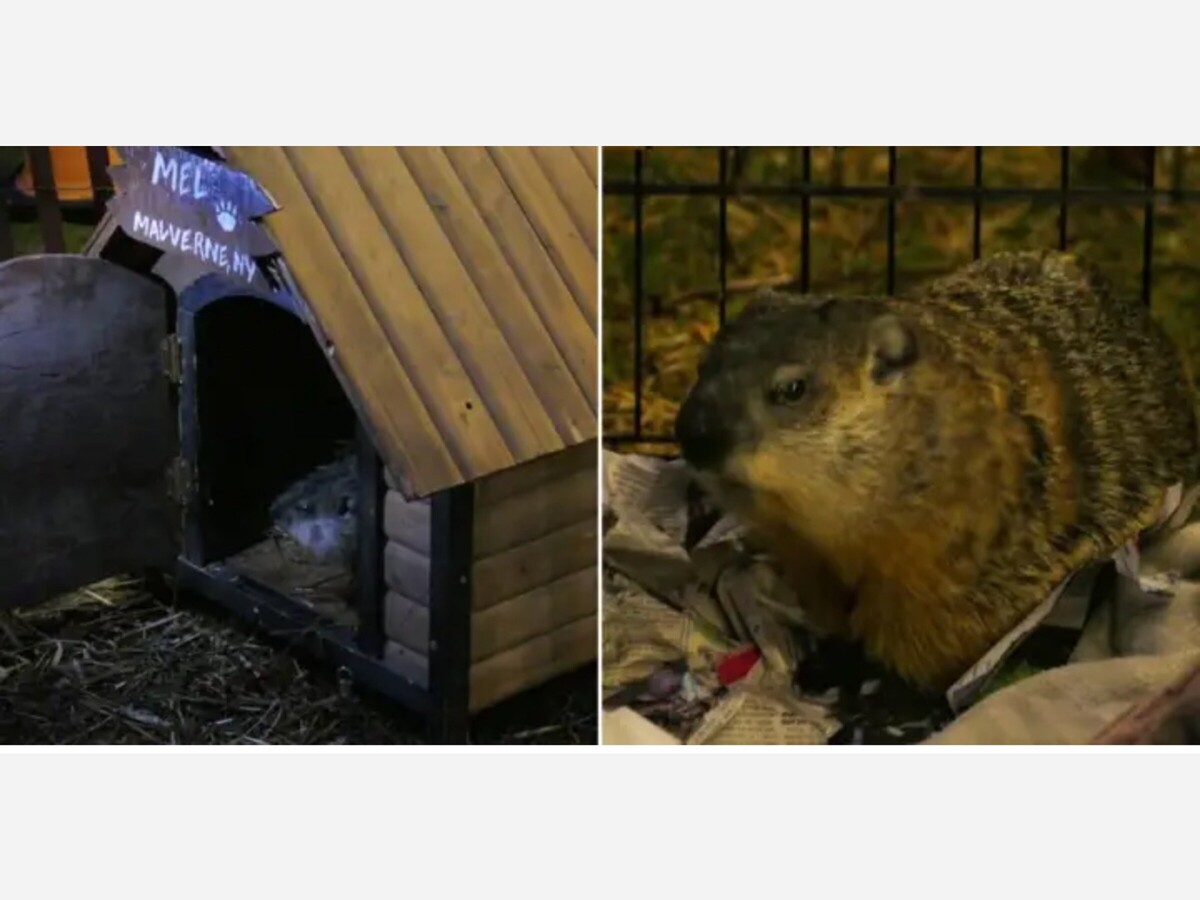Image


Malverne Mel, the esteemed weather forecasting groundhog of Long Island, made a significant revelation on Friday, Feb. 2, as he emerged from his burrow at Crossroads Farm. Much to the delight of weather enthusiasts and spring enthusiasts alike, Malverne Mel did not cast a shadow. According to age-old lore, this absence of a shadow heralds the arrival of early spring. The anticipation of milder temperatures and blooming landscapes is now heightened, and residents eagerly await the seasonal transition that Malverne Mel's forecast implies.
Mel joined forces with his fellow Long Islander, Holtsville Hal, and their renowned cousin from Pennsylvania, Punxsutawney Phil, in predicting an early spring. All three groundhogs, including Mel, concurred in their forecasts as their shadows remained elusive on this Groundhog Day. The collective wisdom of these weather-prophetic rodents points towards an impending arrival of springtime bliss.
The consensus of these furry forecasters was reinforced by other weather-predicting animals in the region. Notably, Beardsley Bart, a prairie dog in Bridgeport, Connecticut, and Cluxatawney Henrietta, a chicken in the Northern Westchester town of Somers, joined the ranks in signaling an early arrival of spring. It seems that nature's diverse cast of meteorological prognosticators is aligning in agreement, adding credibility to the anticipation of milder days ahead.
Out west, the suspense lingered as weather enthusiasts eagerly awaited the verdict from Mojave Maxine, a prognosticating desert tortoise residing in California's Coachella Valley. With bated breath, they anticipated Maxine's forecast to further complete the mosaic of weather predictions, adding a unique touch from the arid landscapes of the West. The anticipation of her insight into the changing seasons continues to captivate those curious about the whims of nature.
The anticipation for Mojave Maxine's prediction was tinged with expectations, as meteorologist Jerry Steffen from Palm Springs station KMIR suggested that if she sees both sun and shadow, it could signal six more weeks of winter. The unique insights of this desert tortoise promised to bring a distinct perspective to the weather predictions, adding a touch of intrigue to the unfolding narrative of seasonal forecasts in the West.
Groundhog Day, observed annually on Feb. 2 in the United States and Canada, has its roots traced back to the Pennsylvania Dutch. This tradition, steeped in folklore, has become a cultural marker where a groundhog's emergence predicts the duration of winter. The celebration has evolved into a quirky and widely recognized event, with Punxsutawney Phil and other weather-forecasting animals capturing the public's imagination each year.
Despite being a delightful tradition, historical records reveal no consistent correlation between a groundhog seeing its shadow and the actual arrival of spring-like weather. The whimsical nature of Groundhog Day and its predictions highlights the lightheartedness of the event, reminding us that nature's patterns are more complex than a single rodent's shadow can foretell.